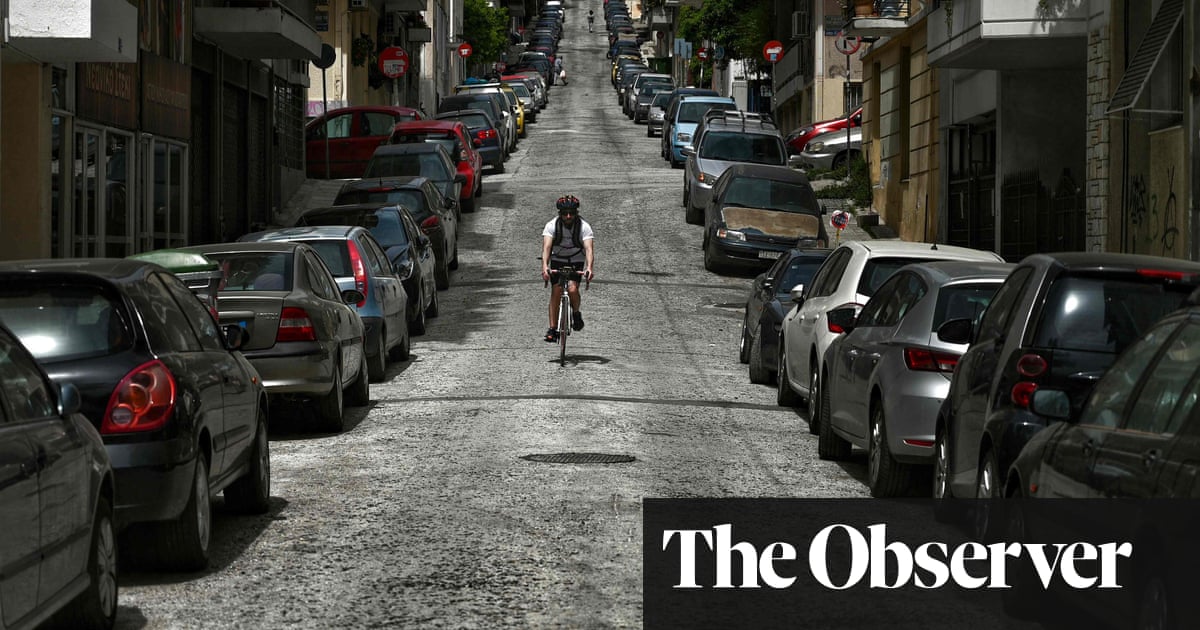Early this year I took a fall. In broad daylight, on a street in downtown Athens, I tripped, clipping my right foot on a marble step jutting on to the pavement in front of the entrance to a furniture store. The step’s railing, grabbed in a desperate attempt to break the fall, then did what I never expected: collapsing in my hands, it threw me with even greater force across the pavement. A broken shoulder was diagnosed. Seven months later physiotherapy continues.
In this I am far from alone. The mean streets of Athens are an obstacle course daily blamed for such injuries (or worse). Like the marble step that town hall officials later branded illegal, all manner of “visual noise” – starting with motorbikes and cars – occupies valuable pavement space.
The mayor of Athens Haris Doukas is the first to agree. Acknowledging that much of the city poses “significant accessibility challenges” he has pledged to make his fiefdom more pedestrian-friendly. “We’ll be working intensely to confront the problem of illegal parking, to replace damaged pavements, to introduce ramps,” he said earlier this summer, reckoning that 44% of older people and those with disabilities found it hard to negotiate the streets at all.
Among the many who have taken to social media to vent their spleen over pavements strewn with potholes, broken paving stones or no paving stones at all, are pensioners demanding that authorities “give sidewalks back to pedestrians”.
“Everyone seems to think pavements are an extension of their property,” bemoaned one retiree, explaining why walking in Athens had become such a perilous act.
All this could have been kept under wraps – aired only by residents griping about the “epidemic” of falls on sidewalks – if the Greek capital was not also attracting record numbers of visitors and big investment from hoteliers abroad.
An estimated 7 million tourists will visit mainland Europe’s southernmost metropolis this year – proof, if any were needed, that the ancient city, once a stopover to Aegean island pearls, hassurged in appeal as a destination in its own right.
Increasingly the state of Greek pavements – and official dereliction in dealing with them – has become a talking point with holidaymakers seeking counsel on platforms such as Tripadvisor on “how to avoid tripping or falling while walking?”
“I’m used to sidewalks in better condition where I’m from,” wrote Denny, an American visiting the capital last year. “What I’m concerned about is tripping or stumbling … Is it OK to walk in the street when the sidewalk appears dangerous?”
Amid the emojis and exclamation marks one “destination expert” felt fit to opine: “Yes, but just be careful 🙂 My advice (& what I do as I’d be sure to trip if I didn’t!) is to look down at where you’re walking, don’t look at sites, scenery etc while still on the move …”
The dire state of Athenian pavements accounts for why “the most vulnerable of pedestrians have almost disappeared from public areas,” says the pedestrian rights group, Pezi, noting that people with disabilities, parents with prams or elderly people are rarely to be seen on the city’s streets.
“I joined Pezi 20 years ago when I began noticing how difficult it was for my ageing father to walk as little as 200 metres because on any pavement it meant going up and down, leaping from here to there, to avoid all the hurdles,” says Nikos Stappas, an environmental engineer. “Sadly progress has been very slow. There are effective, low-cost policies that could easily be enforced but planning is all over the place. I think people have totally lost hope.”
Illegally parked vehicles aren’t the only problem. If pavements aren’t taken over by restaurant and cafe owners exploiting public space as “exclusive” seating areas – four out of 10 have been found by the Athens Polytechnic to indulge in the practice – they’re invariably littered with planter boxes, rubbish, garbage bins, bollards, pillars and poles. Which is why lightning reflexes are so often required to navigate sidewalks made impassable because they are so narrow.
after newsletter promotion
But it is widely recognised that cars are the greatest culprits. Athens has one of the highest car ownership rates in the world: 816 out of 1,000 people in the city possess vehicles. That invests parking with a premium that frequently sees sidewalks providing the perfect solution. Less than 11% of Athens’ 3.2 million-strong population cycle or walk compared with 27% in London and 36% in Barcelona.
Can the Greek capital ever become walkable? At a time when climate change has focused conversation on the concept of the 15-minute city (in which services are never more than a quarter of an hour away) it’s the million-dollar question being asked by urban designers, geographers, engineers and architects.
Alexandros Bartzokas-Tsiompras, an urban planner who has spent the past three years coordinating the Walkable Athens project, believes it can, but only if tough choices are made and visionary policies applied. “Any action has to be holistic,” he says emphasising that the vast majority of pavements had been revealed to be not only narrower than they should be but also in deplorable condition. “To improve sidewalks we need to overcome the issue of parking and to do that we need to improve public transport, create electric bike-sharing stations at metro stops, introduce a London-style congestion charge and no-parking streets.”
The list goes on and on, he says, but “ultimately this will be a public health issue, too”.
In his sixth-floor office Andreas Grammatikoyiannis, Athens’ deputy mayor points out a stack of thick yellow files bulging with compensation claims. “They come in every week because so many are having accidents on our streets,” he says. “If it were up to me cars would be banned from the historic centre so we can concentrate on installing decent routes for pedestrians. At the end of the day we have to decide what sort of character we want our city to have.”
